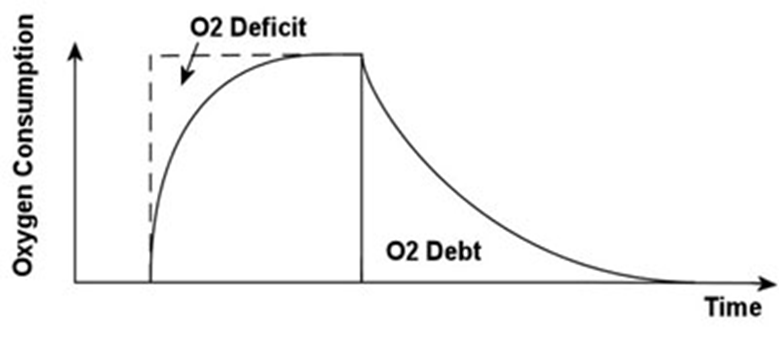A.2.3.4 Oxygen Deficit and EPOC (HL)
Oxygen Deficit - the difference between the oxygen that your muscles demand and the oxygen you can actually provide your muscles
Oxygen Debt / EPOC (Excess Post-exercise Oxygen Consumption) - after prolonged exercise aerobic or anaerobic exercise, the body accumulates an oxygen debt. During recovery, the body needs to repay this debt and requires extra oxygen to remove lactic acid
Factors that occur in muscle cells during exercise
ATP = Decrease
Phosphocreatine = Decrease
Glycogen = Decrease
Triglycerides = Decrease
CO2 = Increase
Oxygen/myoglobin stores = Decrease
Lactic acid = Increase
Water = Increase
What does this graph show us?

Oxygen deficit: at the start, oxygen demand exceeds supply, so relies on anaerobic systems are used
Steady-state exercise: oxygen supply meets demand
EPOC Phase: After exercise, oxygen consumption remains elevated to restore homeostasis. This curve gradually decreases as the recovery progresses
The steep initial decline represents the alactacid acid phases (fast recovery)
The slower, prolonged decline represents the lactacid phase (slow recovery)
EPOC has two components:
Fast component:
ATP and PCr are resynthesized
Myoglobin is replenished with oxygen
The first few minutes of recovery
Slow component:
Removal of lactic acid
Maintenance of ventilation and body temp
Takes mins to hours
Alactic (Fast) characteristics of EPOC | Lactic (Slow) Characteristics of EPOC |
|
|